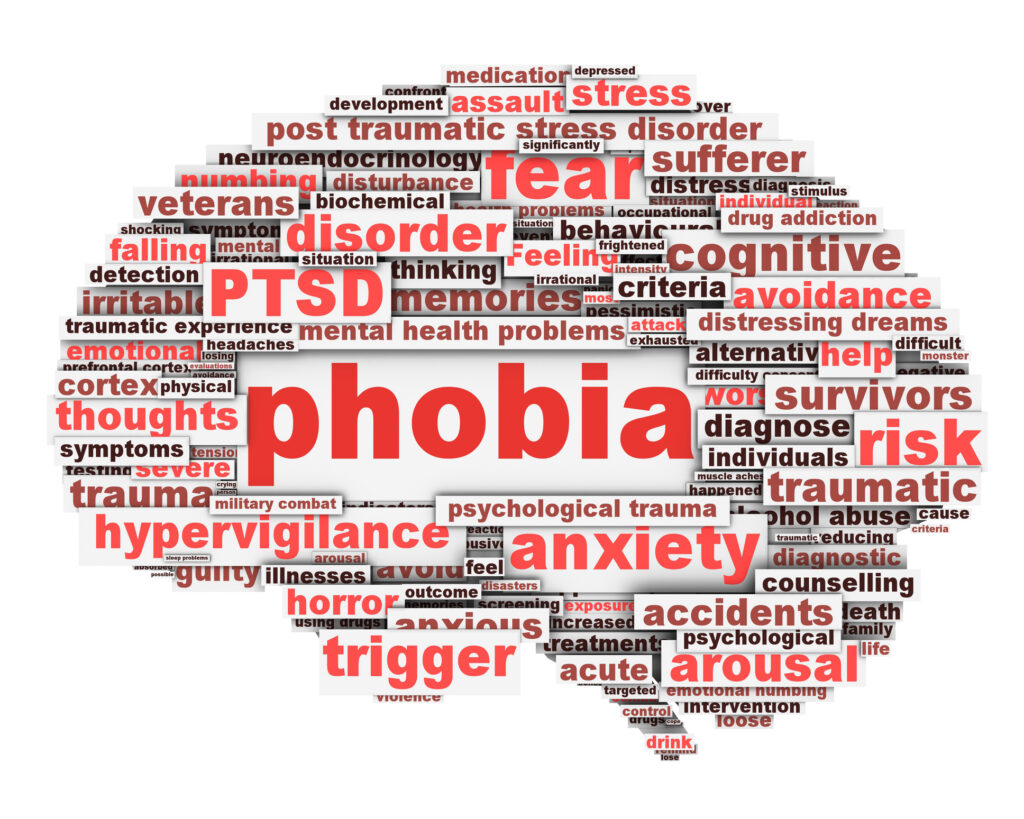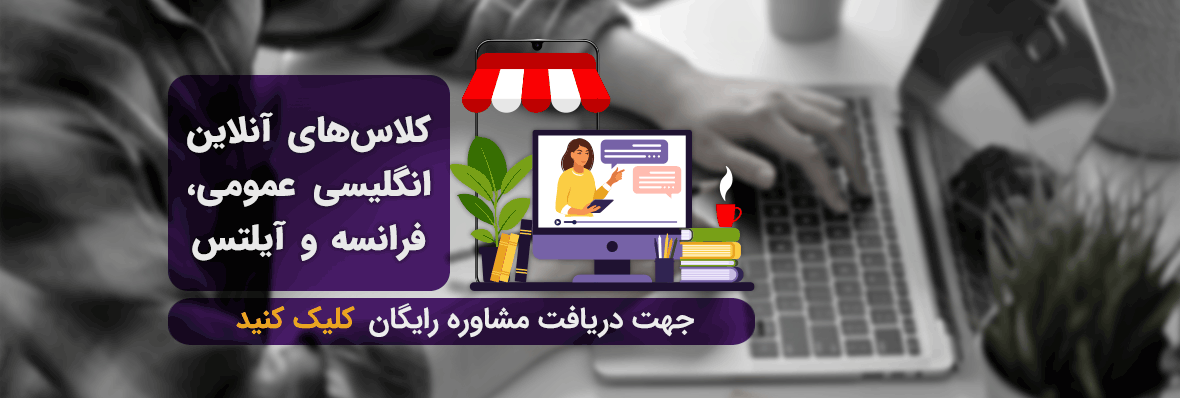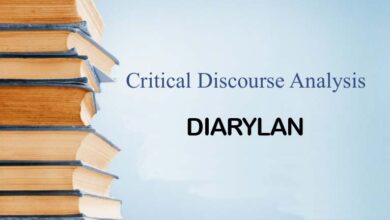
Overview
A phobia is an irrational fear of something that’s unlikely to cause harm. The word itself comes from the Greek word Phobos, which means fear or horror.
Hydrophobia, for example, literally translates to fear of water.
When someone has a phobia, they experience intense fear of a certain object or situation. Phobias are different than regular fears because they cause significant distress, possibly interfering with life at home, work, or school.
People with phobias actively avoid the phobic object or situation, or endure it within intense fear or anxiety.
Phobias are a type of anxiety disorder. Anxiety disorders are very common. They’re estimated to affect more than 30 percent of U.S. adults at some time in their lives.
In the Diagnostic and Statistical Manual of Mental Disorders, Fifth Edition (DSM-5), the American Psychiatric Association outlines several of the most common phobias.
Agoraphobia, a fear of places or situations that trigger fear or helplessness, is singled out as a particularly common fear with its own unique diagnosis. Social phobias, which are fears related to social situations, are also singled out with a unique diagnosis.
Specific phobias are a broad category of unique phobias related to specific objects and situations. Specific phobias affect an estimated 12.5 percent of American adults.
Phobias come in all shapes and sizes. Because there are an infinite number of objects and situations, the list of specific phobias is quite long.
According to the DSM, specific phobias typically fall within five general categories:
- fears related to animals (spiders, dogs, insects)
- fears related to the natural environment (heights, thunder, darkness)
- fears related to blood, injury, or medical issues (injections, broken bones, falls)
- fears related to specific situations (flying, riding an elevator, driving)
- other (choking, loud noises, drowning)
These categories encompass an infinite number of specific objects and situations.
There’s no official list of phobias beyond what’s outlined in the DSM, so clinicians and researchers make up names for them as the need arises. This is typically done by combining a Greek (or sometimes Latin) prefix that describes the phobia with the -phobia suffix.
For example, a fear of water would be named by combining hydro (water) and phobia (fear).
There’s also such a thing as a fear of fears (phobophobia). This is actually more common than you might imagine.
People with anxiety disorders sometimes experience panic attacks when they’re in certain situations. These panic attacks can be so uncomfortable that people do everything they can to avoid them in the future.
For example, if you have a panic attack while sailing, you may fear sailing in the future, but you may also fear panic attacks or fear developing hydrophobia.

Common phobias list
Studying specific phobias is a complicated process. Most people don’t seek treatment for these conditions, so cases largely go unreported.
These phobias also vary based on cultural experiences, gender, and age.
A 1998 survey of more than 8,000 respondents published in the British Journal of PsychiatryTrusted Source found that some of the most common phobias include:
- acrophobia, fear of heights
- aerophobia, fear of flying
- arachnophobia, fear of spiders
- astraphobia, fear of thunder and lightning
- autophobia, fear of being alone
- claustrophobia, fear of confined or crowded spaces
- hemophobia, fear of blood
- hydrophobia, fear of water
- ophidiophobia, fear of snakes
- zoophobia, fear of animals

Unique phobias
Specific phobias tend to be incredibly specific. Some so much so that they may only affect a handful of people at a time.
These are difficult to identify because most people don’t report unusual fears to their doctors.
Examples of some of the more unusual phobias include:
- alektorophobia, fear of chickens
- onomatophobia, fear of names
- pogonophobia, fear of beards
- nephophobia, fear of clouds
- cryophobia, fear of ice or cold

The sum of all fears so far
A | |
Achluophobia | Fear of darkness |
Acrophobia | Fear of heights |
Aerophobia | Fear of flying |
Algophobia | Fear of pain |
Alektorophobia | Fear of chickens |
Agoraphobia | Fear of public spaces or crowds |
Aichmophobia | Fear of needles or pointed objects |
Amaxophobia | Fear of riding in a car |
Androphobia | Fear of men |
Anginophobia | Fear of angina or choking |
Anthophobia | Fear of flowers |
Anthropophobia | Fear of people or society |
Aphenphosmphobia | Fear of being touched |
Arachnophobia | Fear of spiders |
Arithmophobia | Fear of numbers |
Astraphobia | Fear of thunder and lightning |
Ataxophobia | Fear of disorder or untidiness |
Atelophobia | Fear of imperfection |
Atychiphobia | Fear of failure |
Autophobia | Fear of being alone |
B | |
Bacteriophobia | Fear of bacteria |
Barophobia | Fear of gravity |
Bathmophobia | Fear of stairs or steep slopes |
Batrachophobia | Fear of amphibians |
Belonephobia | Fear of pins and needles |
Bibliophobia | Fear of books |
Botanophobia | Fear of plants |
C | |
Cacophobia | Fear of ugliness |
Catagelophobia | Fear of being ridiculed |
Catoptrophobia | Fear of mirrors |
Chionophobia | Fear of snow |
Chromophobia | Fear of colors |
Chronomentrophobia | Fear of clocks |
Claustrophobia | Fear of confined spaces |
Coulrophobia | Fear of clowns |
Cyberphobia | Fear of computers |
Cynophobia | Fear of dogs |
D | |
Dendrophobia | Fear of trees |
Dentophobia | Fear of dentists |
Domatophobia | Fear of houses |
Dystychiphobia | Fear of accidents |
E | |
Ecophobia | Fear of the home |
Elurophobia | Fear of cats |
Entomophobia | Fear of insects |
Ephebiphobia | Fear of teenagers |
Equinophobia | Fear of horses |
F, G | |
Gamophobia | Fear of marriage |
Genuphobia | Fear of knees |
Glossophobia | Fear of speaking in public |
Gynophobia | Fear of women |
H | |
Heliophobia | Fear of the sun |
Hemophobia | Fear of blood |
Herpetophobia | Fear of reptiles |
Hydrophobia | Fear of water |
Hypochondria | Fear of illness |
I-K | |
Iatrophobia | Fear of doctors |
Insectophobia | Fear of insects |
Koinoniphobia | Fear of rooms full of people |
L | |
Leukophobia | Fear of the color white |
Lilapsophobia | Fear of tornadoes and hurricanes |
Lockiophobia | Fear of childbirth |
M | |
Mageirocophobia | Fear of cooking |
Megalophobia | Fear of large things |
Melanophobia | Fear of the color black |
Microphobia | Fear of small things |
Mysophobia | Fear of dirt and germs |
N | |
Necrophobia | Fear of death or dead things |
Noctiphobia | Fear of the night |
Nosocomephobia | Fear of hospitals |
Nyctophobia | Fear of the dark |
O | |
Obesophobia | Fear of gaining weight |
Octophobia | Fear of the figure 8 |
Ombrophobia | Fear of rain |
Ophidiophobia | Fear of snakes |
Ornithophobia | Fear of birds |
P | |
Papyrophobia | Fear of paper |
Pathophobia | Fear of disease |
Pedophobia | Fear of children |
Philophobia | Fear of love |
Phobophobia | Fear of phobias |
Podophobia | Fear of feet |
Pogonophobia | Fear of beards |
Porphyrophobia | Fear of the color purple |
Pteridophobia | Fear of ferns |
Pteromerhanophobia | Fear of flying |
Pyrophobia | Fear of fire |
Q-S | |
Samhainophobia | Fear of Halloween |
Scolionophobia | Fear of school |
Selenophobia | Fear of the moon |
Sociophobia | Fear of social evaluation |
Somniphobia | Fear of sleep |
T | |
Tachophobia | Fear of speed |
Technophobia | Fear of technology |
Tonitrophobia | Fear of thunder |
Trypanophobia | Fear of needles or injections |
U-Z | |
Venustraphobia | Fear of beautiful women |
Verminophobia | Fear of germs |
Wiccaphobia | Fear of witches and witchcraft |
Xenophobia | Fear of strangers or foreigners |
Zoophobia | Fear of animals |









جدولتون حرف نداره.عالی
ممنون نظر لطفتون.